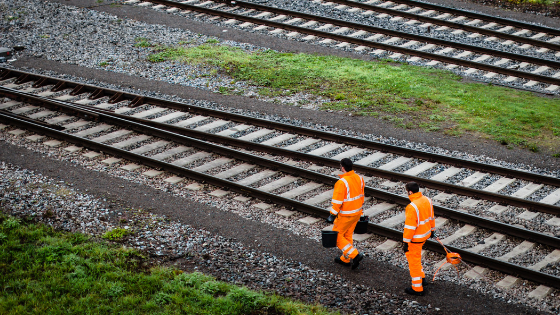Railroad workers, like other transportation workers, are at unusually high risk of injury in the workplace.
After all, they deal with heavy machinery and trains moving at high speeds more often than any other worker. That comes with a whole host of hazards and potential accidents.
Rail safety workers play a critical role in keeping your workplace free of harm. Here’s what a rail safety worker does–and what you can do to support them.
What Does a Rail Safety Worker Do?
A rail safety worker is an employee or contractor responsible for various safety tasks.
What this entails depends on their rail company and on the type of worker. Some common types of rail safety workers include:
- Employee-in-charge (EIC)
- An EIC is responsible for managing the safety of other workers, including other rail safety workers. Think of them as a manager – they ensure that all other safety team members know their roles in a workgroup.
- Watchman/lookout
- A watchman is someone trained to provide warning of approaching trains and equipment to other workers. Their sole tasks are to provide a warning to other workers and to identify safe places for workers to go if a train is approaching.
- Flagman
- A flagman is someone who directs and restricts the movement of trains and equipment to avoid collisions and injuries.
How to Stay Safe
All of these workers must come together in order to provide a safe working environment for your team.
However, they need support in order to do their jobs properly. You could have the most capable safety team in the business and it wouldn’t do you a drop of good without the appropriate safety measures in place to support their work.
Here are a few things you can do to ensure your safety team can function as effectively as possible.
Training and Mentorship
The safety of rail workers does not rest exclusively with your EIC, watchman, and flagman. To keep all of your workers safe, you need to have all of your employees on board with the endeavor.
For that, you’re going to need to establish strong training and mentorship programs.
When an employee heads to work, no matter how large or small their role, they should have a working knowledge of how to work safely. In order to ensure that everyone is on the same page, start out every employee with basic safety training.
From there, you can give employees training that’s been tailored for their specific role. Once new employees have passed these initial training stages, you can pair them with senior employees to ensure they’re using what they’ve learned in real time.
Conduct Regular Audits
It’s not enough to train your employees. Even the most talented, dedicated employees can make mistakes.
In order to prevent this, you should conduct regular safety audits and inspections.
Part of maintaining a healthy, productive safety culture is to treat audits as preventative rather than punitive. The goal is not to witch hunt, but rather to ensure that all workers are staying compliant with safety standards.
These audits should be conducted by someone with extensive knowledge of your safety program, someone who has been trained to spot potential workplace hazards. They should have a checklist of what hazards to look for and a clear set of steps to follow if they spot a hazard in the making.
Keeping Rail Workers Safe
A rail safety worker is just one small component of a much larger safety program. To support them, you need to give them the right tools and resources - whether it be personal protective equipment, safety software, or training and development courses.
